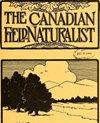威斯康辛州中部重新定居的野生灰狼(Canis lupus)种群的领土气味标记和发情前
Q4 Agricultural and Biological Sciences
引用次数: 0
摘要
灰狼(Canis lupus)使用气味标记来交流繁殖状况、统治地位和领土边界。尽管对繁殖和种群动态具有重要意义,但关于野狼种群的气味标记和发情的信息仅限于少数几个地方。在北美东部靠近物种南部范围的一个重新定居的灰狼种群中,我们估计了领地气味标记率和发情前的概率。对221个狼群冬季跟踪数据的分析表明,每增加一个狼群,标记率提高3.4%,而增加狼群数量,标记率降低12.1%。随后,气味标记率从重新定居期间的1.9次/公里增加到种群饱和后的3.0次/公里。我们在12月19日至3月14日观察到发情的证据,在1月26日左右标记率达到峰值后,最高概率发生在2月6日左右。对个别族群血尿的反复观察表明,发情期平均为27.9天。本研究揭示了种群增长对领地行为的影响,为探索地理和时间变化对狼领地和繁殖行为的影响奠定了基础。本文章由计算机程序翻译,如有差异,请以英文原文为准。
Territorial scent-marking and proestrus in a recolonizing wild Gray Wolf (Canis lupus) population in central Wisconsin
Gray Wolf (Canis lupus) uses scent-marking to communicate breeding status, dominance, and territorial boundaries. Despite its importance for reproduction and pack dynamics, information on scent-marking and proestrus in wild wolf populations is limited to a handful of locations. We estimated the rate of territorial scent-marking and the probability of proestrus in a recolonizing Gray Wolf population near the species southern range extent in eastern North America. An analysis of 221 pack-winters of tracking data show that the incremental addition of one wolf pack increased marking rates by 3.4%, whereas increasing the number of wolves in a pack decreased marking rates by 12.1%. Scent-marking rates subsequently increased from 1.9 times/km during recolonization to 3.0 times/km once the population was saturated. We observed evidence of proestrus from 19 December to 14 March with the highest probability of proestrus occurring around 6 February, after peak marking rates around 26 January. Repeated observations of bloody urinations within individual packs suggest proestrus averages 27.9 days. Our study reveals the role of population growth on territorial behaviours and provides a foundation for studies exploring the role of geographic and temporal variation on territorial and reproductive behaviours in wolves.
求助全文
通过发布文献求助,成功后即可免费获取论文全文。
去求助
来源期刊

The Canadian Field-Naturalist
Agricultural and Biological Sciences-Ecology, Evolution, Behavior and Systematics
CiteScore
0.60
自引率
0.00%
发文量
54
期刊介绍:
The Canadian Field-Naturalist (ISSN: 0008-3550) publishes scientific papers by amateur and professional naturalists and field biologists, reporting observations and results of investigations in any field of natural history, provided they are original, significant, and relevant to Canada.
 求助内容:
求助内容: 应助结果提醒方式:
应助结果提醒方式:


